Blog - Professional information about medical tourism services in Tirana
Professional information about dental tourism in Albania, especially cosmetic surgery such as rhinoplasty, hair transplants, dental services, dental implants, and tourism in Tirana, Albania.
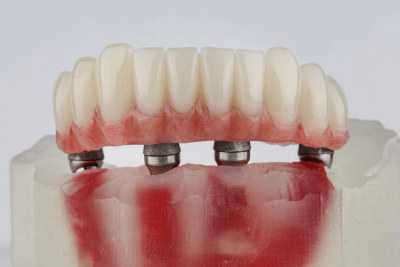
How Long Do All-on-4 Implants Last? A Practical Guide to Making Them Last a Lifetime
All-on-4 implants offer a long-lasting solution for a full smile with just four implants per arch. Learn how long they last and how to care for them.
Find out more
Top 5 Reasons Why You Should Consider Dental Bonding for Your Teeth
Discover why dental bonding is one of the most popular cosmetic treatments among Italian patients in Albania. Fast results, affordable prices, and a brand-new smile in just one visit.
Find out more
Dental Implants in One Day: Is This the Right Solution for You?
Replace your missing teeth in just one day with advanced dental implants. Find out if this solution is right for you — and how it can help you restore your smile faster, with fewer visits and greater comfort.
Find out more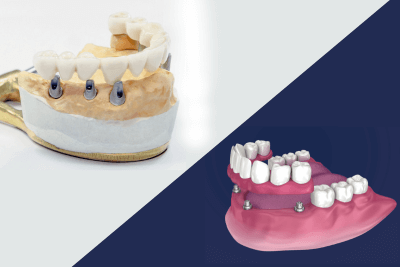
All-on-6 vs All-on-4 Dental Implants: Which One Is Right for You?
Discover the key differences between All-on-4 and All-on-6 dental implants, including how they work and what benefits they offer. Find out which solution best fits your needs, lifestyle, and long-term expectations.
Find out more
How Much Does a Dental Implant Cost in Albania? Our Prices and What’s Included
Discover how much a dental implant costs in Albania and what’s included in our package for international patients. High-quality treatment at a fraction of Western European prices.
Find out more
Dental Implant or Denture: Which Is the Best Choice for You?
Dental implants or dentures? This article clearly explains the differences and why dental implants are the most modern, functional, and long-lasting solution for your smile and oral health.
Find out more
What Can You Eat After Getting Dental Implants?
Discover what to eat and avoid after getting dental implants to ensure a fast, smooth, and successful recovery. A step-by-step guide for your post-surgery diet and care.
Find out more
Just Got Dental Implants This Summer? Here's How to Take Care of Them
Summer is the perfect time to get dental implants and enjoy a smooth recovery. Follow these essential care tips to protect your new smile and heal without complications.
Find out more
Is Getting a Dental Implant Painful? How Does Anesthesia Work?
Dental implants are often feared for pain, but modern anesthesia makes the procedure nearly painless. Learn how you can safely restore your smile without fear.
Find out more
How Long Do Dental Implants Last? Are They Forever?
Discover how long dental implants can truly last and what factors influence their success. A complete guide to making a safe, long-term investment in your smile.
Find out more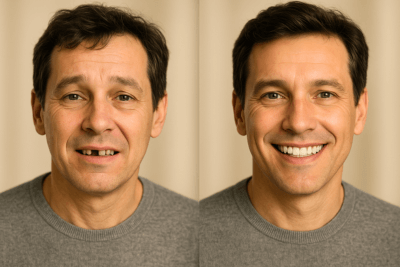
What Happens If You Don't Replace Your Missing Teeth?
Losing a tooth may seem harmless, but the long-term consequences can affect your health, confidence, and quality of life. Discover why replacing missing teeth in time is essential and how dental implants offer a permanent, effective solution.
Find out more
Can Dental Implants Be Placed During the Summer?
Discover why summer is actually a great time to get dental implants—especially when combined with a relaxing vacation in Albania. Learn how proper care and expert treatment ensure fast, safe healing even in the warmest months.
Find out more
Dental Implants in Tirana and the Best Beaches Nearby: Smile and Relax in One Trip
Combine your dental implant treatment in Tirana with a relaxing beach vacation. Discover how Albania Medical Tour turns your smile journey into a summer escape.
Find out more
Why Albania Medical Tour Is the Best Clinic for Your Dental Implants in Albania
Discover why Albania Medical Tour is the No.1 clinic for dental implants in Albania. European quality, affordable prices, and full assistance.
Find out more
Dental Bonding Cost in Albania Compared to Italy: Procedure Duration and Benefits
Read about the cost of dental bonding in Albania vs. Italy, how long the procedure takes, and the key benefits of choosing it—especially when done abroad.
Find out more
Dental Bonding: A Fast and Budget-Friendly Option to Improve the Appearance of Your Teeth
Are you dreaming of whiter, more evenly shaped teeth—done quickly and without overspending? Dental bonding is one of the easiest and most effective ways to achieve this.
Find out more
Why Are Dental Implants So Expensive?
A break down the key factors contributing to their price and help you understand why investing in dental implants is often a wise decision.
Find out more
How to Prevent Infections in Dental Implants
How to avoid dental implant infections and keep your smile healthy and beautiful
Find out more
How to Prepare for a Free Dental Consultation in Albania
A complete guide to help you understand what to expect from a free dental consultation in Albania and how to prepare for it
Find out more
Dental Implants in Albania: The Affordable Solution for Perfect Teeth
Discover why Italians choose Albania for high-quality and affordable dental implants.
Find out more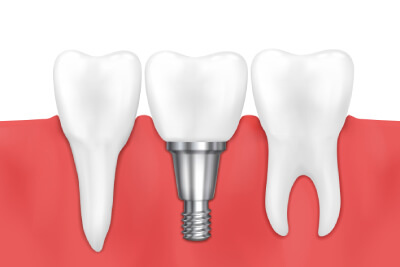
Top 10 Dental Implant Materials Ranked: Pros and Cons
Let’s rank the top 10 materials for dental implants and explore their pros and cons.
Find out more
How to Choose the Best Dental Implant Option?
A simple guide to help you choose the best dental implant option for your needs.
Find out more
Albanian expatriates in Italy: Why traveling to Albania for dental care is a smart choice
Many Albanians living in Italy return to Albania for dental care. They often bring their Italian partners and friends with them to benefit from dental tourism in Albania
Find out more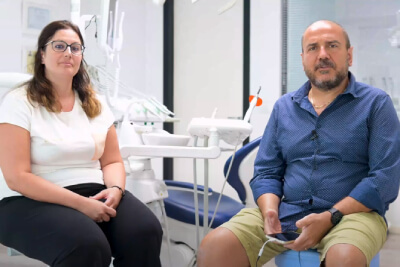
Success stories of Italian patient experiences with dental implants in Albania
Many Italians are choosing Albanian dentists for their dental care. Here, we have illustrated some real stories of our clinic's patients.
Find out more
Beyond expectations - The international standard of professional rhinoplasty in Tirana
People from all over come to Tirana for professional nose reshaping. The rhinoplasty clinics here are famous for their skilled surgeons, modern facilities, and excellent medical care.
Find out more
A comprehensive guide to the All-on-4 tooth renovation revolution
An exploration of the All-on-4 dental solution, including what it is, its benefits, the step-by-step procedure, and the impact of All-on-4 dental implants on dentistry.
Find out more
Simple tips on how to care for your teeth
We prioritize the dental health of our patients by guiding them through essential steps and practices of oral hygiene. Read about some of them.
Find out more
Benefits for Italians to opt for hair transplantation in Albania
If you are considering a hair transplant, Albania offers cost-effective alternatives, quality medical care, experienced professionals, rich natural surroundings, and much more.
Find out more
Why treat your teeth in Albania?
The affordability, high-quality dental care, and the country's history and nature are some of the main reasons why Albania has become one of the top destinations for dental treatment.
Find out more
Who can perform dental implant surgeries?
A list of qualifications and training required for dental specialists to perform dental implant surgeries, a specialized procedure involving the placement of artificial tooth roots into the jawbone.
Find out more
When you need to consider dental implants: 10 common reasons
Ten common situations when dental implants are the best option, addressing issues from trauma aftermath to improved chewing and speech, as well as aesthetic concerns.
Find out more
Understanding common terminology for rhinoplasty
Common rhinoplasty terms to improve your understanding of the procedure and give you a sense of confidence. Revision rhinoplasty, septorhinoplasty, tip plasty and more.
Find out more
FAQs about dental implants: Answering your common questions
Explore answers to common questions about dental implants, offering comprehensive insights to give you confidence and knowledge as you consider this procedure.
Find out more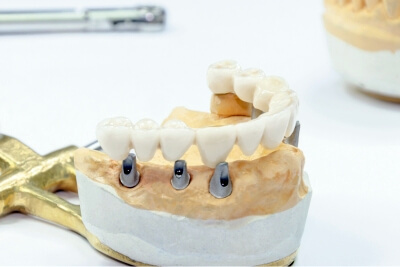
Understanding the All-On-6 dental implants procedure step by step
Starting with the initial consultation, the All-On-6 dental implants procedure involves meticulous treatment planning, strategic implant placement, and crucial osseointegration.
Find out more
Multifaceted psychological impact of hair loss
Explore the emotional journey of hair loss, gaining insights, understanding, and coping mechanisms for emotional well-being.
Find out more
Rhinoplasty: A journey towards enhanced facial harmony
Understanding rhinoplasty, reasons to choose it, the consultation process, how to prepare for the surgery, and choosing the right rhinoplasty surgeon.
Find out more
The fascinating history of rhinoplasty from ancient Egypt to modern day
An exploration of how rhinoplasty has evolved from a primitive form of reconstructive surgery to a highly sought-after aesthetic procedure.
Find out more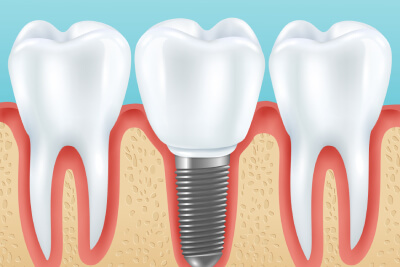
Dental implant aftercare: Maximizing the longevity of your dental implants
How to care for your dental implant post-surgery, including immediate post-surgery care, oral hygiene, dietary considerations, follow-up appointments, and long-term care.
Find out more
A deep understanding of rhinoplasty
Delving into the details of rhinoplasty, exploring common types and techniques of rhinoplasty, the surgical process, recovery and potential benefits.
Find out more
The impact of rhinoplasty on the quality of life after a nose job
Rhinoplasty can bring profound changes to a person's life, affecting their physical, personal, social, and economic aspects. Understanding the facets is key for a satisfying post-operative experience.
Find out more
How to Prepare for Your Dental Implant Surgery: Tips and Recommendations
Essential preparatory steps before and after dental implant surgery for a successful procedure.
Find out more
Rhinoplasty prices in Albania: Exploring costs compared to Italy
Rhinoplasty Costs in Albania. Discover the affordability of rhinoplasty in Albania and the factors influencing low prices. Plan your cosmetic journey wisely.
Find out more
Albania: The best destination for hair transplants in the Balkans
Discover why Albania is the top choice for hair transplant procedures in the Balkans. Explore the advantages of medical tourism in Albania for hair restoration.
Find out more
Albania: The preferred destination for dental tourism among Italians
Albania, the main choice for Italian dental tourism. Benefits of dental treatments in Albania and best clinics.
Find out more
Discover Tirana
Capital of Albania, Tirana is today a city that centers within itself the major industrial activities.
Find out more
Traditional Albanian food
Albanian cuisine has always been heavily influenced by neighboring culinary cultures.
Find out more
The medieval charm of Kruja
Kruja, the ancient Albanian capital, just 32 km from Tirana, is the town symbol of resistance.
Find out more